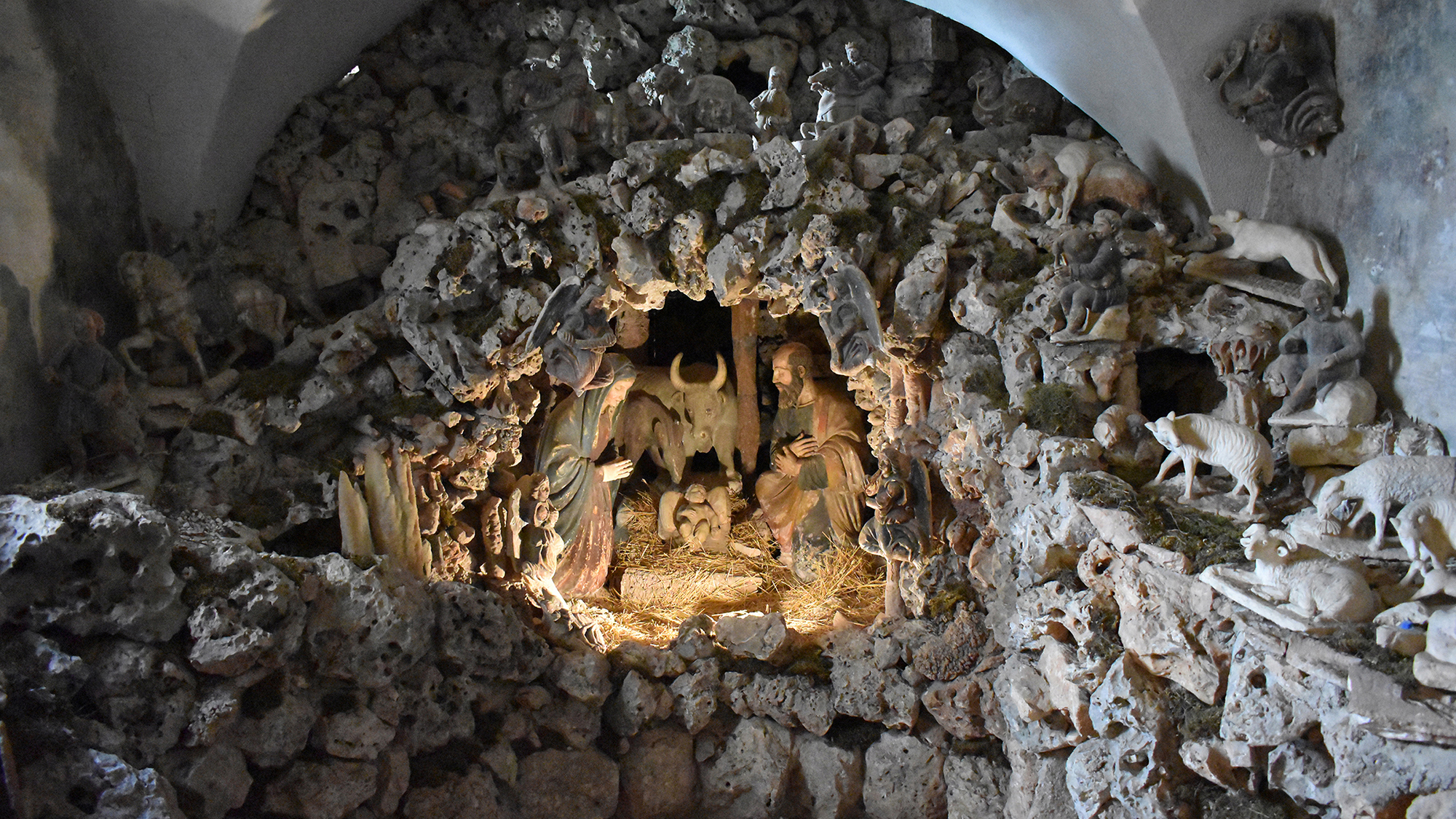Lindsay Sheedy & Kevin Benham

Paolo da Cassano, Presepe, ca. 1535, polychrome limestone. Santuario di Santa Maria degli Angeli in Cassano delle Murge
Lindsay Sheedy
Un’orrida bellezza
While in Rome, Lindsay Sheedy will complete her dissertation, “Un’orrida bellezza: Religious Polychrome Sculpture in the Kingdom of Naples, 1503–1714.” The project examines key developments in the production of polychrome sculpture in Naples and Puglia during the early modern period. It does so with the aim of building a more cohesive contextual framework in which to understand the medium’s development relative to Southern Italy’s unique position in the early modern world. Her talk, “Un’orrida bellezza,” focuses on the work of the Pugliese sculptor Vespasiano Genuino, the man once deemed responsible for the sculpture that first attracted Lindsay to this area of study: the so-called Bad Thief (Il Malladrone) of the Chiesa di San Francesco d’Assisi in Gallipoli. Through this case study of Genuino’s life and work, Sheedy aims to demonstrate how her project situates artists and their work within the broader conditions of their time while paying homage to the new lives and legends that such figures have accumulated over the centuries.
Lindsay Sheedy is the Samuel H. Kress Foundation/Donald and Maria Cox Rome Prize Fellow in Renaissance and Early Modern Studies and a PhD candidate in the Department of Art History and Archaeology at Washington University in St. Louis.
Kevin Benham
Line and Measure
A line in the land is one of the simplest of gestures, yet it is empowered with the capacity for meaning and significance. A line suggests the human act of possessing the land, claiming ground, and marking territory. A simple line traversing topography is also imbued with the possibility of travel, discovery, hope, and opportunity. It holds within it the memory of past actions: as a recording of a physical act imprinted upon the surface of the earth.
Such is the case of the Royal Shepherd’s Track, a series of pathways etched over the millennia into the landscape of the Italian countryside through the process of Transhumance: the seasonal migrations of shepherds and their sheep between the mountains and valleys that have left indexical evidence of journeys, demarcations of the actions of shepherds and their sheep, resulting in the erasure of surface and removal of selective vegetation, thereby altering the ecosystem. The trails move fluidly through the landscape, accumulating as a trace of temporal human/animal interaction and movement through the topography. The lines become narrow and broader as they move from difficult terrain to the open pastures where sheep graze and manicure the verdant valleys. During the growing season the ephemeral lines are more obscure as the vegetation flourishes; subsequently, their traces are reiterated as shepherds move their herds between upland and lowland. The cycle is repeated, lines accumulate as artifacts of action, a palimpsest of time and fluctuation that simultaneously acts as a datum and measure of seasonal and ecological change.
In the past few years, Kevin Benham’s work has capitalized on the power of the line as a datum and mark in the landscape through simple interventions of erasure that exploit the line as a temporal, transitory phenomenon and as a catalyst for advantageous ecosystem change. Broken Kilometer, a kilometer-long cut in the earth near Harlösa, Sweden, completed in conjunction with the EU project Sandlife and managed by the Swedish Fortifications Agency, acts simultaneously as land art and as a stimulus for increasing biodiversity in the area by exposing nutrient poor soils that foster the growth of rare plant species, which in turn attract extraordinary species of insects and birds. Mile Long Burn, a temporal land art project with the National Park Service in the Tallgrass Prairie National Preserve of Kansas, was conducted to maintain the health and vitality of endemic species in the prairie landscape.
Benham proposes to use this strategy of line and erasure to recontextualize the Transhumance—the seasonal movement of herds (mainly sheep) in southeastern Italy between the regions of Abruzzo, Molise, Campania, and Puglia—in terms of its ecological potential.
Kevin Benham is the Prince Charitable Trusts/Kate Lancaster Brewster Rome Prize Fellow in Landscape Architecture and assistant professor, Jon Emerson/Wayne Womack Design Professorship, in the Robert Reich School of Landscape Architecture at Louisiana State University.
The shoptalks will be held in English.